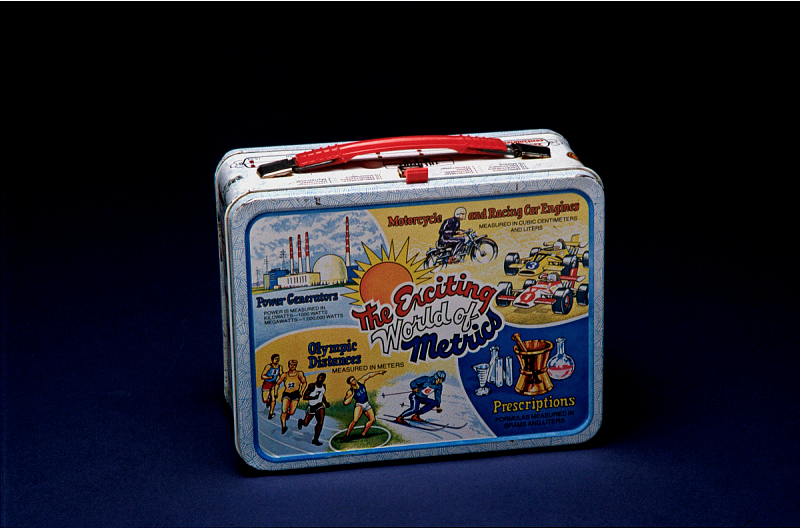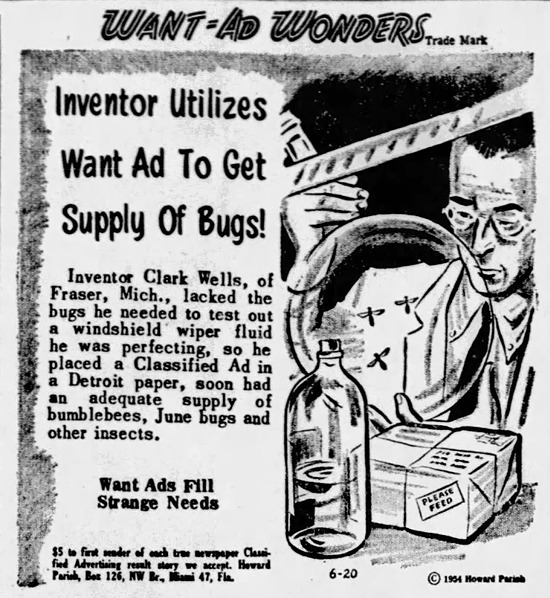Science
Predicting war by mathematics
At an August 1938 meeting of the British Association for the Advancement of Science, Professor Lewis F. Richardson attempted to use mathematics to predict the likelihood of war:He concluded there was "no chance of war," which proved to be a somewhat inaccurate prediction.

The Alexandria Town Talk - Sep 27, 1938
Encyclopedia.com offers some more info on what Richardson was up to:
Despite the eccentricity of his mathematical war-prediction model, Richardson was apparently quite influential in the history of mathematics. Wikipedia notes that he did pioneering work in mathematical techniques of weather forecasting, as well as in the study of fractals.
Posted By: Alex - Sun Jan 10, 2021 -
Comments (8)
Category: Science, War, 1930s
Metric Lunch Box
Imagine the insults suffered by the dweeb forced by well-meaning parents to carry this lunch pail to school.The objects children take to school can communicate messages. In the 1970s, the U.S. government encouraged more general use of the metric units of weight and measure, units that had been adopted in almost all other nations. To teach children about metric units, some parents purchased this lunch box.

Source.
Posted By: Paul - Wed Dec 23, 2020 -
Comments (1)
Category: Food, Government, Science, Bullying, Harassment, Outsiders, Persecuted, and Excluded Groups, Children, 1970s
The Trance

Everything you need to know about religious trances.
Posted By: Paul - Fri Nov 13, 2020 -
Comments (0)
Category: Religion, Science, Supernatural, Occult, Paranormal, Books, Nineteenth Century
Hot Chocolate Effect
As defined by Wikipedia:via TYWKIWDBI
Posted By: Alex - Thu Nov 12, 2020 -
Comments (3)
Category: Noises and Other Public Disturbances of the Peace, Science
Mokapzu Park
Mokapzu Park from Art&Graft on Vimeo.
Posted By: Paul - Tue Nov 10, 2020 -
Comments (1)
Category: Animals, Armageddon and Apocalypses, Humor, Science
The Rule of 87
This "Rule of 87" may have been true in the mid-twentieth century, but I'm guessing that the rise of fertility drugs played havoc with it.
I'll also note that the Minnesota Twins won the 1987 World Series. Coincidence?

Posted By: Alex - Fri Oct 02, 2020 -
Comments (3)
Category: Babies, Science
The Techno-Chemical Receipt Book

This is one of those volumes you pack away for when civilization collapses, as it give the formulas for making from scratch glass, nitroglycerin, glue, and a thousand other handy things.
Read it here.
Posted By: Paul - Sun Sep 13, 2020 -
Comments (2)
Category: Science, Technology, Books, Nineteenth Century
The science of removing bugs from windshields
When you clean bugs off your car's windshield, think of Detroit researcher Clark Wells who spent his career figuring out how best to do this.
St. Louis Post-Dispatch - Mar 22, 1953
The curious actions of Frederick Brownell (left) and Clark Wells at Detroit are in the interests of science. They are using pea-shooter and slingshot to shoot bugs against a windshield at squashing velocity so that Wells, a chemist, can then test fluids to be used in wiper spray to remove them. For his experiments, Wells buys such insects as bumble bees, June bugs, fish flies, deer flies and other of the more succulent species from collectors for amounts up to a dime each.

Huntsville Times - June 20, 1954
Posted By: Alex - Sat Aug 08, 2020 -
Comments (2)
Category: Insects and Spiders, Science, 1950s, Cars
Falling Cats
The physics of falling cats. Narrated by Australian physicist Karl Kruszelnicki.
The Age (Melbourne, Australia) - Sep 4, 1991
Posted By: Alex - Sat Jun 27, 2020 -
Comments (3)
Category: Science, Cartoons, Cats
The drift pattern of Nike shoes
In May 1990, five shipping containers holding approximately 80,000 pairs of Nike shoes fell off a freighter during a storm in the North Pacific. About 200 days later, some of these shoes began to wash up on beaches from Canada down to Oregon.But as beachcombers collected and compared the shoes, they noticed something odd. On beaches up north, in Canada and Washington, almost all the shoes were right-footed; whereas further south in Oregon, most of the shoes were left-footed.
Skye Moody explains why this was so in her book Washed Up: The Curious Journeys of Flotsam and Jetsam:


Drift pattern of Nike shoes
image source: The Nike Shoe Investigation
Oceanographer Curtis Ebbesmeyer co-authored an academic paper about the 1990 shoe spill ("Shoe spill in the North Pacific" -- unfortunately behind a paywall). It also inspired him to start studying other ocean flotsam, such as rubber duckies, as a way to gain info about currents. He calls this study 'flotsametrics'. He also occasionally puts out a Beachcombers' Alert Newsletter.
Posted By: Alex - Tue Jun 16, 2020 -
Comments (0)
Category: Science, Shoes, 1990s

| Who We Are |
|---|
| Alex Boese Alex is the creator and curator of the Museum of Hoaxes. He's also the author of various weird, non-fiction, science-themed books such as Elephants on Acid and Psychedelic Apes. Paul Di Filippo Paul has been paid to put weird ideas into fictional form for over thirty years, in his career as a noted science fiction writer. He has recently begun blogging on many curious topics with three fellow writers at The Inferior 4+1. Contact Us |




